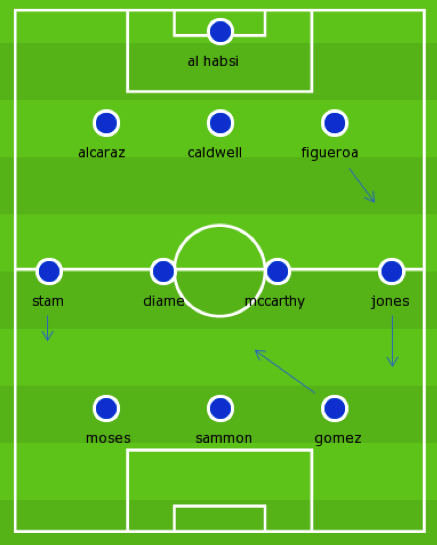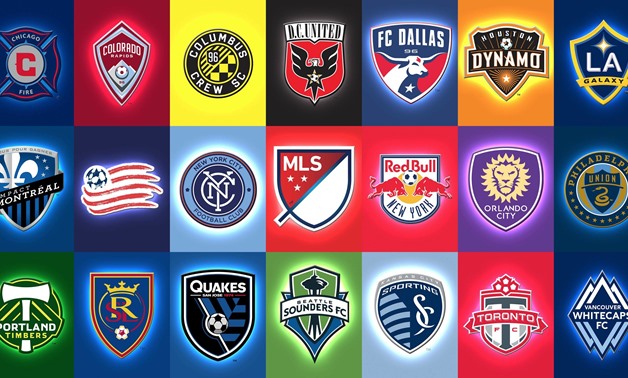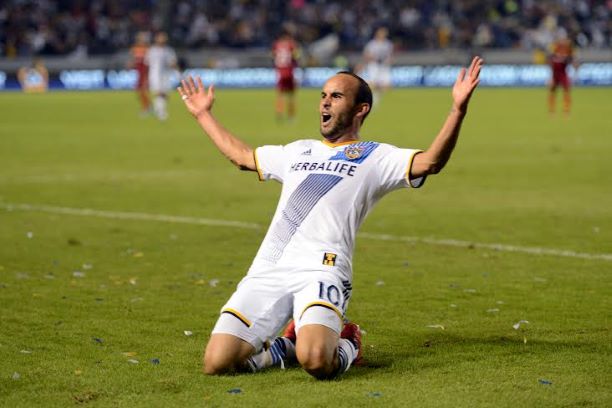Roberto Martinez - inspired by Walter Mazzarri’s Napoli?
Roberto Martinez - inspired by Walter Mazzarri’s Napoli?


By Richard Nash
After starting the season with their customary 4-3-3 formation, Wigan have now lined up in a 3-4-3 system ever since their 3-3 draw with Blackburn on November 19th. Roberto Martinez trialled the system in a 2-0 defeat to Aston Villa on October 1st, but then reverted back to his familiar 4-3-3 for their following game against Bolton. For the most part Martinez has used the same players, moving Maynor Figueroa from left-back to the left of a back-three, and pushing David Jones from central midfield to left wing-back.
In doing so, Wigan now mirror the shape of Walter Mazzarri’s Napoli, probably the most prominent club side currently playing with a back-three (excluding Barcelona’s experimentation).
The movement of the Wigan players closely reflects how Mazzarri sets up his Napoli team. Napoli’s width comes mainly from their wing-backs, especially Christian Maggio on the right. To provide cover, Hugo Campagnaro, the right-sided centre-back, often plays slightly wider than Salvatore Aronica, the left-sided centre-back, especially when Napoli line up against a lone striker. For Wigan, Jones, a natural midfielder, tends to play further forward than Ronnie Stam, a natural full-back. Behind Jones, Figueroa is accustomed to playing left-back and so tends to play wider than Alcaraz.

The front-three also have similarities. For Napoli, Marek Hamsik drops deep to help out in midfield, before breaking forward to link up with his strike partners. Ezequiel Lavezzi uses his pace to attack from the left channel, while Edison Cavani acts as a mobile target-man, bringing teammates into play and being the focal point of the attacks. For Wigan, Jordi Gomez drops deep without the ball to bolster the midfield, Victor Moses likes to attack at pace down the flanks and Connor Sammon (or Hugo Rodallega) looks to hold the ball up and get in the box for crosses.
Ultimately these intricacies give the respective formations a fluency that a standard 3-4-3 system would lack. The lateral movement of the defenders allows the team to take the shape of a back-four if necessary, while the withdrawal of one of the forwards prevents the midfield from being outnumbered against a side playing three in the middle. Equally the forwards perform distinctive roles, one as a playmaker, one resembles a winger and the central striker leads the line. For both managers to stumble across these details independently seems unlikely, and thus there is the suggestion that Martinez has taken some inspiration from Mazzarri’s system.
Wigan’s success with the 3-4-3 may depend on how their opponents deal with an unfamiliar system. Napoli’s success in Serie A is aided by the prevalence of narrow midfields and front-twos, whereas the Premier League has always been dominated by wingers and is now littered with single-striker formations, both of which provide problems for back-threes. Even so, early signs are positive – Wigan have got 10 points in the 9 games they have lined up 3-4-3 (including games against Man Utd, Chelsea, Liverpool and Arsenal) compared to 5 points in 10 games playing 4-3-3.
Obviously, Wigan’s players lack the talent of their Napoli counterparts, but the similarities are interesting. Whether this extends to the style of play is less likely. Napoli are primarily a counter-attacking side, looking to defend deep and move the ball forward quickly when in possession. Roberto Martinez likes Wigan to keep possession with shorter, more patient passing. It would take a major shift in philosophy for Martinez to copy Mazzarri any further.







